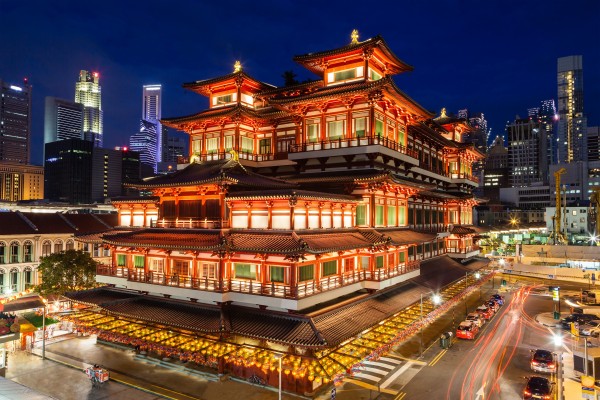El Niño 2023

Singapore is not spared from El Niño and La Niña, the two climate phenomena that tremendously influence and affect weather patterns worldwide. These phenomena occur as part of the El Niño-Southern Oscillation (ENSO) cycle, a natural climate pattern. The resurfacing of El Niño is closely related to the warming of surface water in the Pacific Ocean. This explains the heatwave and unpleasant weather we have been experiencing over the past few weeks. Scientists have also warned that El Nino will strongly impact us this June. In this article, we will dive into the cause and effects of these phenomena and their implications for Singapore and the rest of the globe. Tips and advice on how to be better prepared will also be covered.
El Niño Meaning
What is El Niño and La Nina?
El Niño and La Niña, are like siblings of the El Niño-Southern Oscillation (ENSO). So what are they? Well, El Niño refers to the warmer phase, while La Niña refers to the colder phase. This cycle usually occurs every few years. Though they may seem unharmful, they usually last for 3-4 quarters of the year, and in some circumstances, they last for years. La Niña typically affects Singapore during the southwest monsoon season from June to September, leaving us with an increased amount of rainfall.
Why is it called La Niña and El Niño?
La Niña and El Niño originated from Spanish, which translates to “girls” and "boys," respectively. Because these phenomena of climate usually happen during Christmas, it is adopted in line with the Spanish names of the Christ Child (El Niño) and the Virgin Mary (La Niña).
El Niño Effect
Is El Niño good or bad? How is it caused?
Now, you may be wondering, it’s just climate change, what's the big deal?
El Niño and La Niña are adorned with trade winds that blow from east to west. The norm is when these winds push warm water towards the western Pacific while the cooler water pushes water up towards South America. However, during the phase of El Niño, the trade winds reverse, allowing an accumulation of warm water in the central and eastern Pacific. On the contrary, La Niña heightens the winds, pushing cooler water up to the surface.
El Niño vs La Niña

What is El Niño and how is it caused? What are 3 effects of El Niño?
Singapore is not spared of this. In short, El Niño causes drought and water scarcity, while La Niña causes floods and increases rainfall. If that does not seem serious enough, imagine waking up and having no water coming out of your tap. Singapore has limited water resources, and El Niño can put us at the least advantage as reduced rainfall will lead to lower water levels in reservoirs and cause a strain on the already limited water supply. Therefore, it is apt that we do our best to conserve water and have good habits to prevent the worst from happening.
Agriculture impacts are also an effect of El Niño, which may lead to a limited food supply in Singapore. Drier conditions are not ideal for crop yields, so farmers and our food supply are badly affected. Therefore, it is only right if we adopt conscious and responsible consumption.
El Niño causes the ocean temperature to rise, which sets off coral bleaching, where corals expel symbiotic algae from their tissues, which leads to the deterioration of coral reefs. The decline of coral reefs has negative consequences for the marine ecosystem, as coral reefs are vital to marine ecosystems and sources of biodiversity. Thus, to prevent this issue from worsening, immediate social awareness is needed. It is vital to raise awareness about the importance of coral reefs and teach citizens how to support conservation efforts.
Does El Niño cause drought?

El Nino is often associated with droughts faced in Indonesia and Australia due to its association with bringing about warm waters. Severe droughts caused by the extreme effects of El Nino, threaten vulnerable countries' water supplies due to dehydrated reservoirs. Eventually, the drought issue will snowball into agriculture issues due to the lack of rainfall. Conversely, in Singapore during an El Nino episode, we face a significant increase in rainfall which we call ‘ the monsoon season’
Who is most affected by El Niño?
No one is spared from El Niño, we all share the same and only earth. Climate change affects everyone. However, those living in eastern and southern Africa, Latin America, the Caribbean, and the SEA region are affected the most. The severe drought, the food insecurity it brings about, and bipolar weather conditions have caused disease outbreaks and malnutrition. With globalization and every country being interlinked and interdependent on one another, El Nino has a crippling domino effect on every single one of us.
Singapore may seem sheltered from many problems that other countries face; however, when it comes to climate change, we are not. El Nino brings about drier conditions and reduced rainfall in Singapore. With our already scarce water resources, El Nino only makes it worse. As a country, we ought to be proactive and come up with strategies to ensure that there is enough food and water during such periods.
This climate disaster is causing economic and social havoc for everyone. Extensive ocean warming is seen as El Nino conditions last for months. Not only does it affect the external environment, but it also affects the economy. The effects of El Nino on the climate, affect the price of commodities and the macroeconomy of countries.
La Niña

What happens during La Niña
La Nina essentially cools the ocean surface in the central and eastern tropical Pacific oceans. What it means in Singapore’s context is that rainfall tends to increase, and winds from the eastern side get stronger. This mainly explains why we experience wetter conditions between February to May of each year. In 2022, La Nina condition triumphed throughout the year which brought us a wetter than usual condition in Singapore and our neighbouring countries
Does La Niña bring rain?
During La Nina, cooler sea surface temperatures are often observed in the central and eastern Pacific, which tends to bring about increased rainfall in specific regions, Singapore is no different. From June to September, the southwest monsoon season, Singapore usually faces a higher level of precipitation. The effect of La Nina is the above-than-average rainfall observed.
However, this does not apply to all countries, as these climate phenomena vary depending on geographical locations and supplementary climate issues.
Conclusion

Although El Niño and La Niña are naturally occurring climate phenomena, the effect they have on Singapore and the rest of the world is significant and jarring. By educating ourselves and understanding the causes and effects, we can make better decisions and build efficient measures in advance to help mitigate losses while building overall resilience. Early investments in warning systems, government policy intervention, and teaching sustainable practices can allow Singapore to adapt and always be prepared to face climate change better before it affects us all.
Singapore may be saved from many things, but it is not insulated from the various impacts of climate change. Let us set a good example for the next generation by contributing back to the planet and creating a resilient earth for the ones after us. Take charge of our mother earth today before it gets swept away forever.
Don't risk moving during the hot summer season too, better leave it out to professional movers and packers who know how to handle this.
What do our customers say?






What’s happening?
Please notify us of any violations. This information will be kept confidential and shared only with Wise Move.
- It’s inaccurate or incorrect
- If you find it offensive
- It’s something else





















